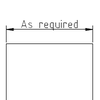Science fiction often amazingly predicts technological innovation.
I have been inspired to make this since I was in 7th grade (in 1990) when I built my first robotic arm for the science fair (and made it to state if I may brag. ;) ).
The following year I saw Terminator 2, and have wanted something cool like that ever since. But a few years ago I noticed that there were a number of emerging technologies that, if used together, could make something much more game changing happen.
Arduino became well developed. 3D printing became available to the consumer. Nerve interfacing through inexpensive hardware was released. Osseointegration (the ability to attach prosthetics directly to bone and heal safely) was developed, for a cat of all creatures, and neural control of machines via data became available to the hobbyist. Oh, and don't forget the innovations in direct-nerve interfaces allowing people to "feel" electronic input as if it were their own nerve impulses.
Then I played a game called Deus Ex: Human Revolution, and I knew what I wanted to do. Not only that, but from all of the tech innovations swarming the market, I knew it was possible.
But nobody had combined all these innovations in one place.
I had an extensive background in electronics from my self-taught electronic engineer father, (then and still counting) 13 years in the military as a Signal Support Systems Specialist, aka communications/electronics nerd, and a passion for creating and inventing, and I knew I had to try.
So I taught myself 3D modeling, built a 3D printer, started learning C++ programming for Arduino, and set out to design a replacement arm for myself that would surpass my own arm's capabilities.
Of course I can't do everything. I am not a surgeon. I am not a neuroscientist. But I can build the foundation for the arm, and I'm well on the way to doing so.
My biggest hurdle is time, and money. As usual.
I have developed many friends worldwide through the internet working on innovations like this including Easton LaChappelle who designed the arm that showed me what I'm dreaming to do is possible. OpenBionics who are producing innovative bionic hands using 3D printing, and others.
If you think you can help me in any way please contact me. In the least I'd appreciate your vote for the Hackaday.io contest. Share this project and get the word out! Human biological improvement is within reach!
See more pics from the project here: http://imgur.com/a/XxGeP#0
 Amadon Faul
Amadon Faul



Hello,
I really like the concept of this project, using air muscles to articulate the arm means a greater 1:1 translation of human motion. Do you have any STL or STP files that are associated with this. I would like to plug them into a SolidWorks FEA simulation to get a better sense of how to optimize the part design. Great work! Keep it up!